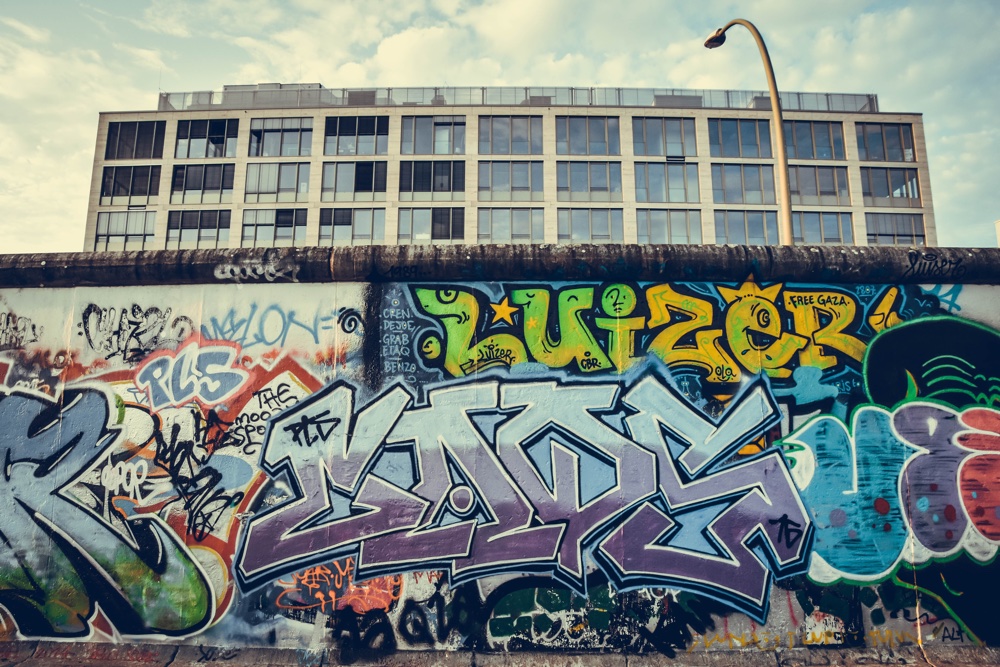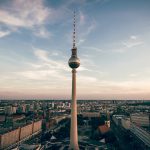
2019 marks the 30th anniversary of the fall of the Berlin Wall. Reason enough for Berlin and the Federal Government to plan a multitude of celebrations, exhibitions and events.
Between 4 and 10 November 2019, the city is to be transformed into a gigantic be transformed into an open-air exhibition and event area.
Alexanderplatz, Gethsemanekirche, Brandenburg Gate, Schlossplatz, Kurfürstendamm, East-Side-Gallery and Stasi headquarters in Lichtenberg are to be the settings for large-scale projections with images, films and sound installations. Concerts, lectures and readings are to take place in many places in the city. Contemporary witnesses will tell their subjective view of the events, poetry slams and film screenings will contribute an artistic perspective.
The festivities will be rounded off by the concert evening on 9 November 2019. The whole city is to become a concert stage for international artists.
While the Wall Museum at the East Side Wall has been reporting on all aspects of life in the shadow of the Wall since its founding in 2016, in accordance with its self-imposed mission, many other museums will present partial aspects with special exhibitions in 2019, without attempting to convey the whole. The museum, which is next to the tourist attraction East-Side-Gallery, the Wall Museum makes use of opportunities that are not available to others. And which some do not want.
“We take a differentiated look at the time of upheaval in the GDR,” says Tom Sello, Commissioner for the Reappraisal of the SED Dictatorship in the State of Berlin. It is also about the hopes, wishes and demands that people had at that time. “We want to look at the international dimension of the events. In doing so, we also want to deal with the people who did not experience 1989 as a single celebration. In this respect, the ambivalences of remembrance also play a major role for us this year.“
10 years ago, in 2009, a large open-air exhibition on the Peaceful Revolution was created on the Alex, and huge dominoes toppled over along the Wall. For the 25th anniversary In 2014, the course of the Wall was marked with 8000 luminous balloons that rose into the sky in the evening.
In 2019, the state organisers no longer want to focus on the Wall, it is to be less grand, but “reminiscent and cautionary”.
Well, also independent of state-organised memory becomes Berlin will be a fantastic place again in 2019. World stars like Pink or Fleetwood Mac and Eric Clapton will thrill the city with their concerts. Artists as diverse as Udo Lindenberg, Kiss, Rammstein, Metallica and the electronic pop artist Schiller offer entertainment for every taste. Since the fall of the Wall, Berlin’s club scene has become one of the liveliest in the world. Whether jazz, rock, punk or classical, every visitor to Berlin will find his or her music. The artists who use their freedom in the clubs today celebrate the fall of the Wall one of the most honestly.
As always, the cultural end of the year is marked by the New Year’s Eve party between the Brandenburg Gate and the Victory Column with many artists.
Other guests will be attracted to the city in 2019 by the numerous congresses. Many will combine work with a visit to the former border. Arguably no place on the former zonal border can match the waterfront at the East Side Wall. The Oberbaumbrücke is the ideal starting point for a walk along the Spree and the balcony of the Wall Museum is the perfect vantage point there.
Thousands will come to the Berlin Marathon. However, they will mainly see the former West Berlin, so a detour to the East Side Gallery is a must for them as well, just as it is for the many tourists.
Berlin will continue to live up to its reputation as a vibrant metropolis in 2019.
But where there is much light, there is also shadow. For example, the idea of a central memorial is not being realised. Which is not necessarily bad.
The mood is not exactly positive in parts of the population, in the East even less than in the West. Another party, with the usual rock and bouncy castle mix, will do little to change that. Even the party organised by the Kommission “30 Jahre Friedliche Revolution und Deutsche Einheit” unter dem Vorsitz des ehemaligen brandenburgischen Ministerpräsidenten Matthias Platzeck scheitern wird. 22 Männer und Frauen aus Politik, Wissenschaft, Wirtschaft und Kultur, darunter die Ministerpräsidentin von Mecklenburg-Vorpommern, Manuela Schwesig and the actor Jan Josef Liefers, should do the trick. But there is nothing sensationally new in the schedule of events. Just everything a little bigger and more expensive.
Platzeck’s idea of a memorial “Centre of Awakening East” for around 200 million euros was beyond the financial scope. So far, “the 30 years of this unprecedented upheaval have been underexposed in their complexity, in their depth”, says Platzeck. He wanted to pay tribute to the achievements of the East Germans.
An e-letter to the editor in the Tagesspiegel Forum indicates the public’s opinion on the matter. (6.5.2019) to:
„Honouring the achievements of the East Germans by frittering away 200 million?
That would have given the East Germans, who suffer even more from precarious working conditions and wage dumping than the West Germans, no one can explain.“
Even without the memorial, over 60 million euros will be spent on the events. What will visitors to these events take home with them? For older people, memories will probably be refreshed. But how will it be with the young people?
The real core of remembrance will probably take place in the families. People who remember together how the Wall affected their lives for 28 years. But we must not forget that the Wall has been gone longer than it was there.
A whole generation has grown up for whom the Wall and the GDR are almost as distant as the Second World War and the Empire. And just as parents and grandparents reacted to the same old stories about the Great War, the young will also roll their eyes and secretly yawn. The fact that the “Peaceful Revolution” was not without personal risks has not been perceived for a long time.
Ostalgie und Relativieren von Staatssicherheit, vormilitärischer Ausbildung and FDJ propaganda are booming. SPD Jusos talk about nationalisation of private property in 2019 and give the impression that the GDR was a democratic socialist constitutional state that was economically viable. Legends of supposedly internationally competitive businesses that were flattened during the Wende period are circulating in ever wider circles. When the Prime Minister of Thuringia proposes a new national anthem in May 2019 demands that East Germans can also sing, this is an example of the state of mind of many East Germans. What is it about “unity and justice and freedom” that bothers the LEFT politician? Have they forgotten all the injustices of the GDR?
Sticking the label “reunification” on concerts will do little to change attitudes. Only the rounding off presentation in a modern multi-media Museum can give an impression of what life was really like.
In 2019, visitors to The Wall Museum will once again experience the history of Berlin’s division and reunification in a multimedia setting. The Mauer Museum is located in the former mill warehouse at the famous East Side Gallery and the Oberbaumbrücke border station.
In 13 rooms, visitors can experience the eventful history of Germany from 1945, the GDR and the Cold War. Original exhibits, multimedia presentations and unique original contributions by famous personalities of contemporary history such as Mikhail Gorbachev or Leonardo DiCaprio make it possible to experience the division of Germany and how it was overcome in a special way. Every day, 10 a.m. – 7 p.m.
A visit to the Wall Museum allows many guests to understand for the first time how the Wall came down, and conveys unknown aspects and lots of interesting background information. The award-winning museum at the Berlin Wall is ideal for schoolchildren and travel groups interested in history, and even surprises people who lived through the events. with a wealth of fascinating films and special exhibits.



